Abstract
Problems of fairness in prospective payment have existed since the inception of this regulatory method in the early 1980s. While prospective payment ostensibly has sought to reward efficient producers and provide disincentives for inefficient producers of health care, many hospitals have been penalized financially as a consequence of facing systematic factors beyond their control. This article defines homogenous peer groups of Department of Veterans Affairs providers for the purpose of establishing competitive prospective reimbursement rates. An econometric analysis classifies hospitals into six categories: small affiliated, small general, midsize affiliated/tertiary, large affiliated/tertiary, midsize general, and psychiatric. The Department of Veterans Affairs adopted this classification to alter its prospective payment system in 1988.
Full text
PDF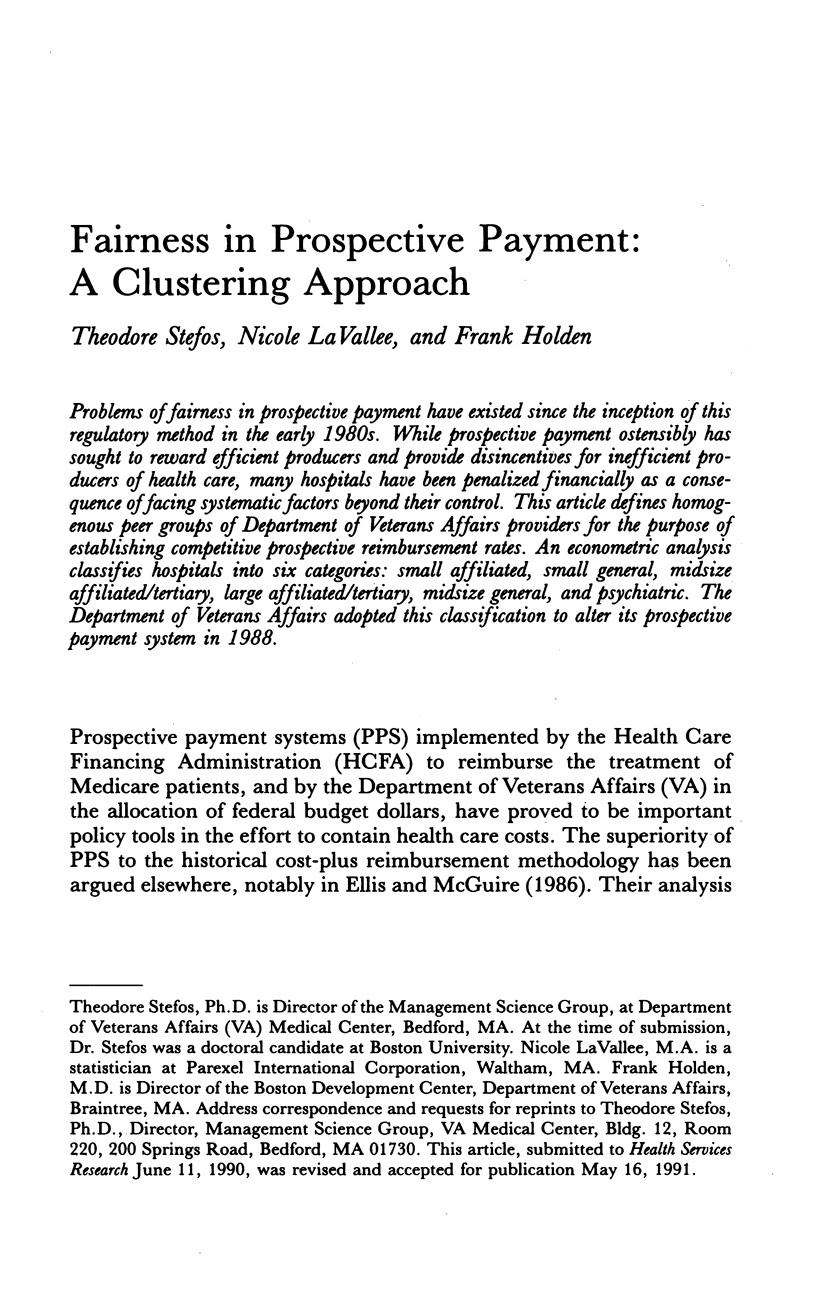
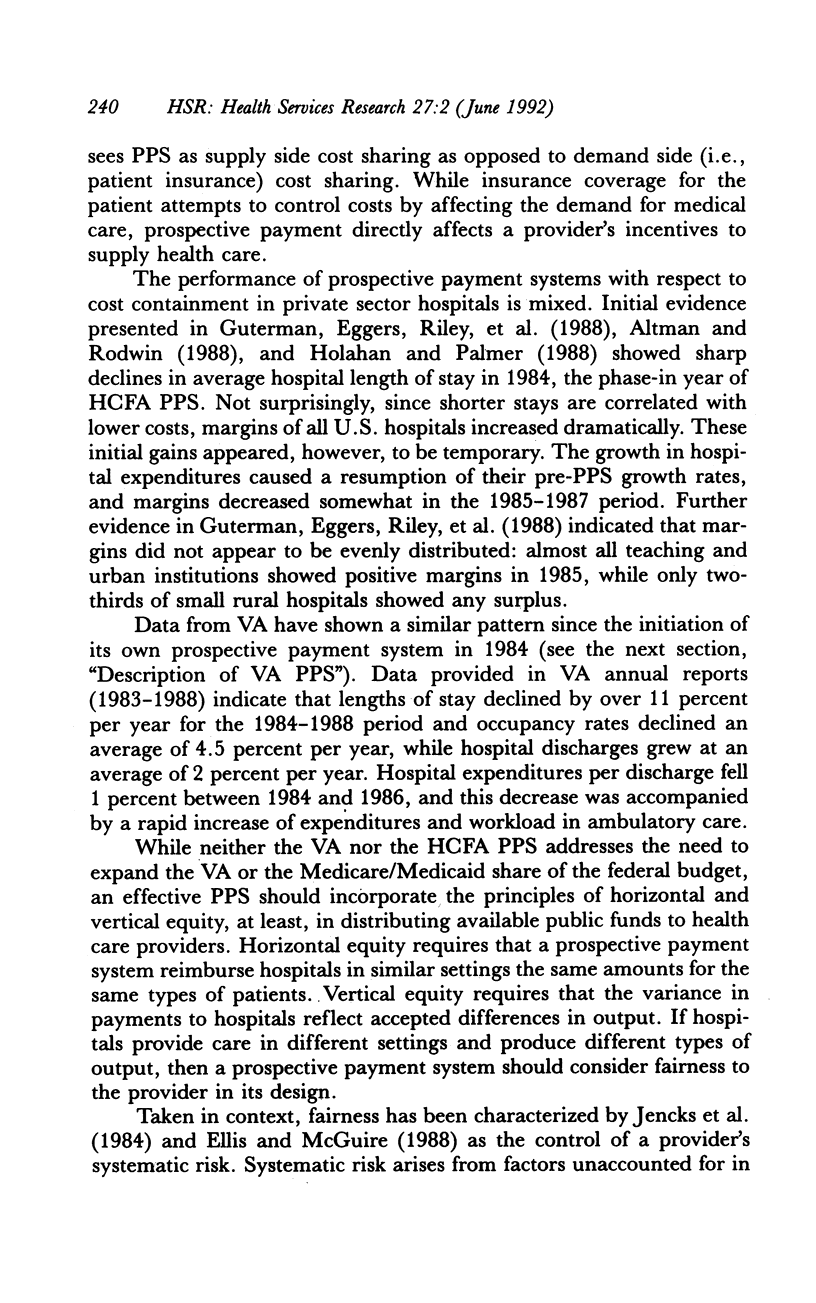

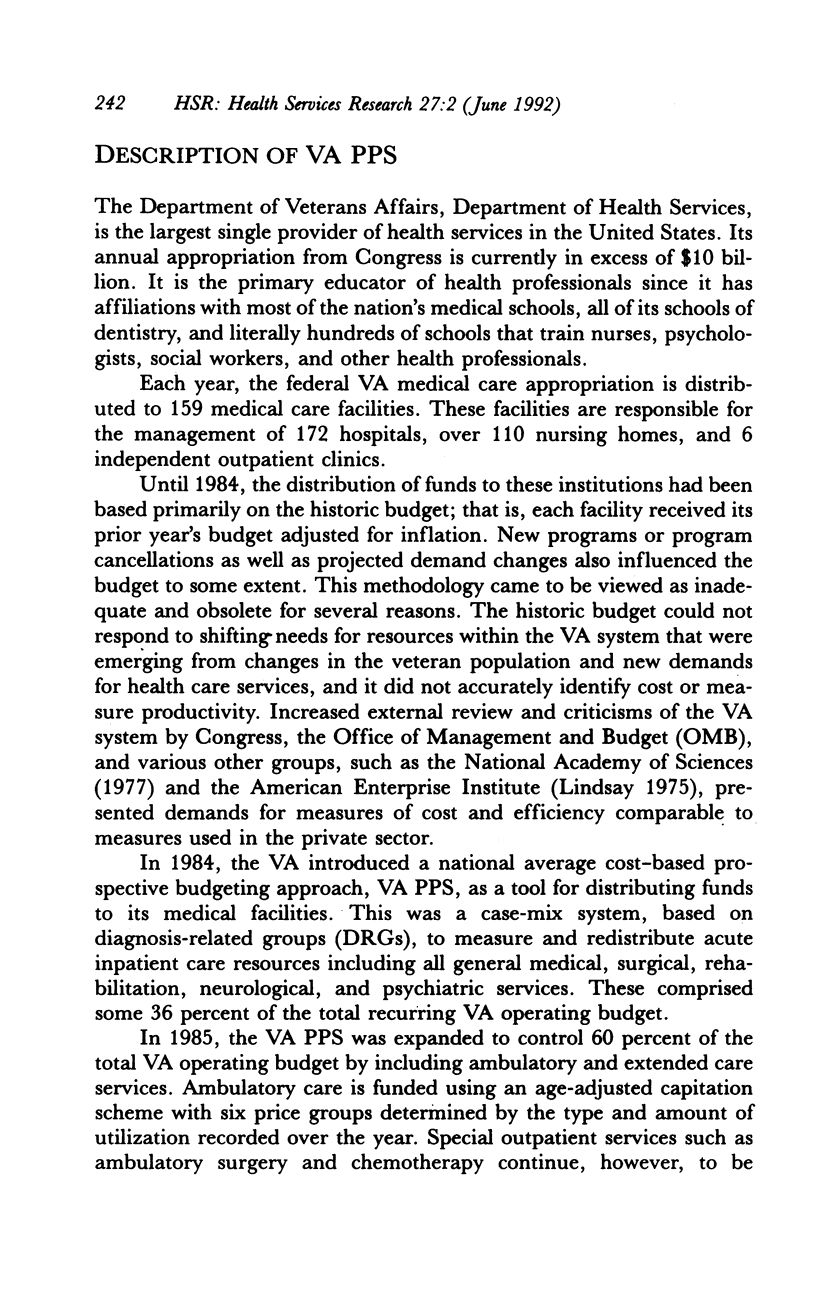
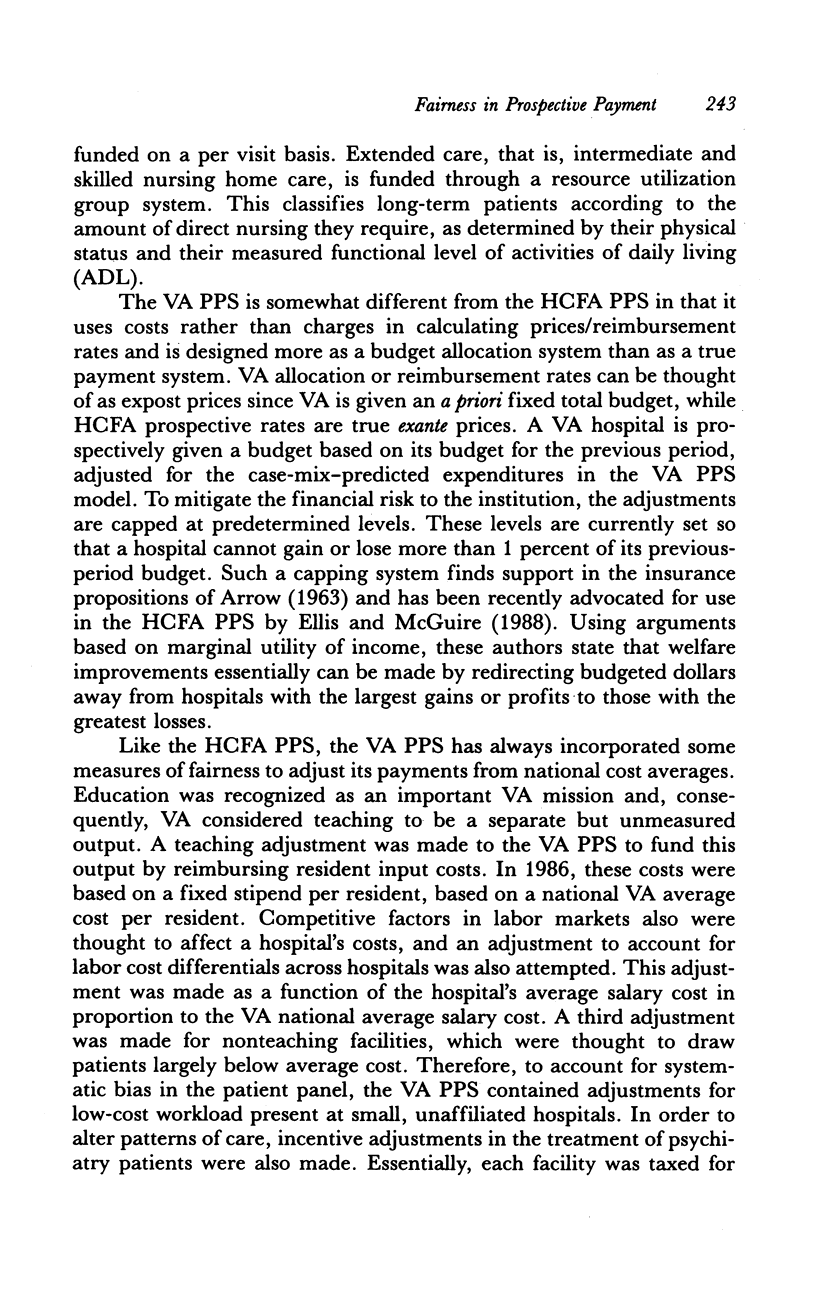

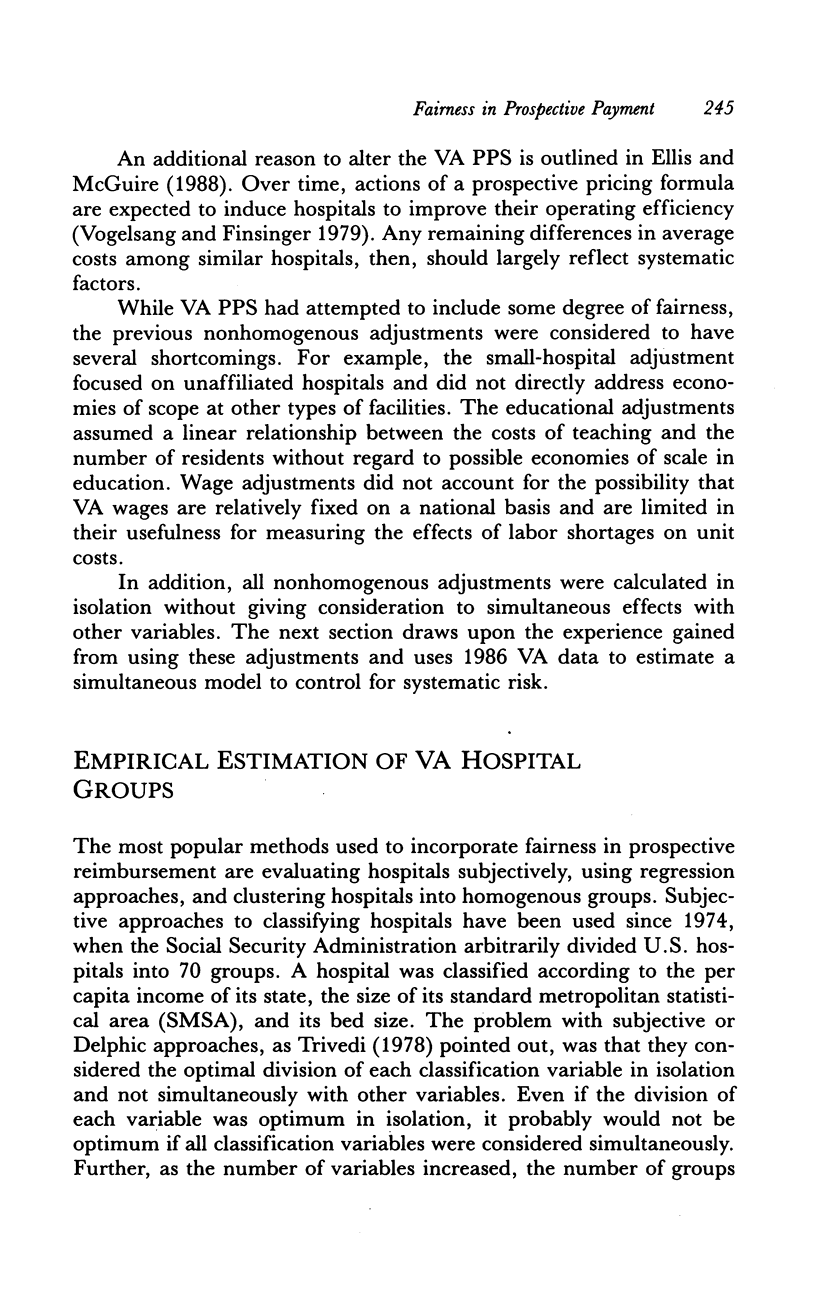
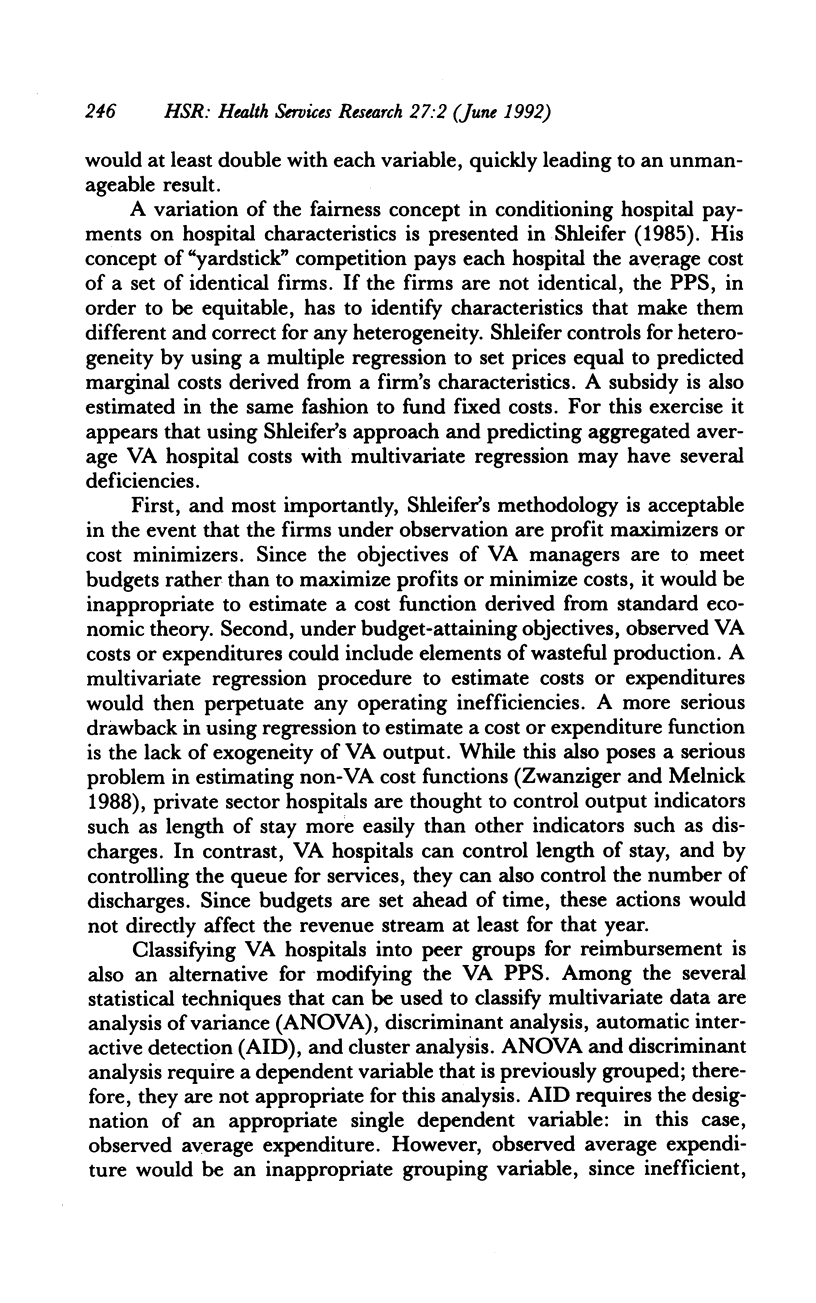
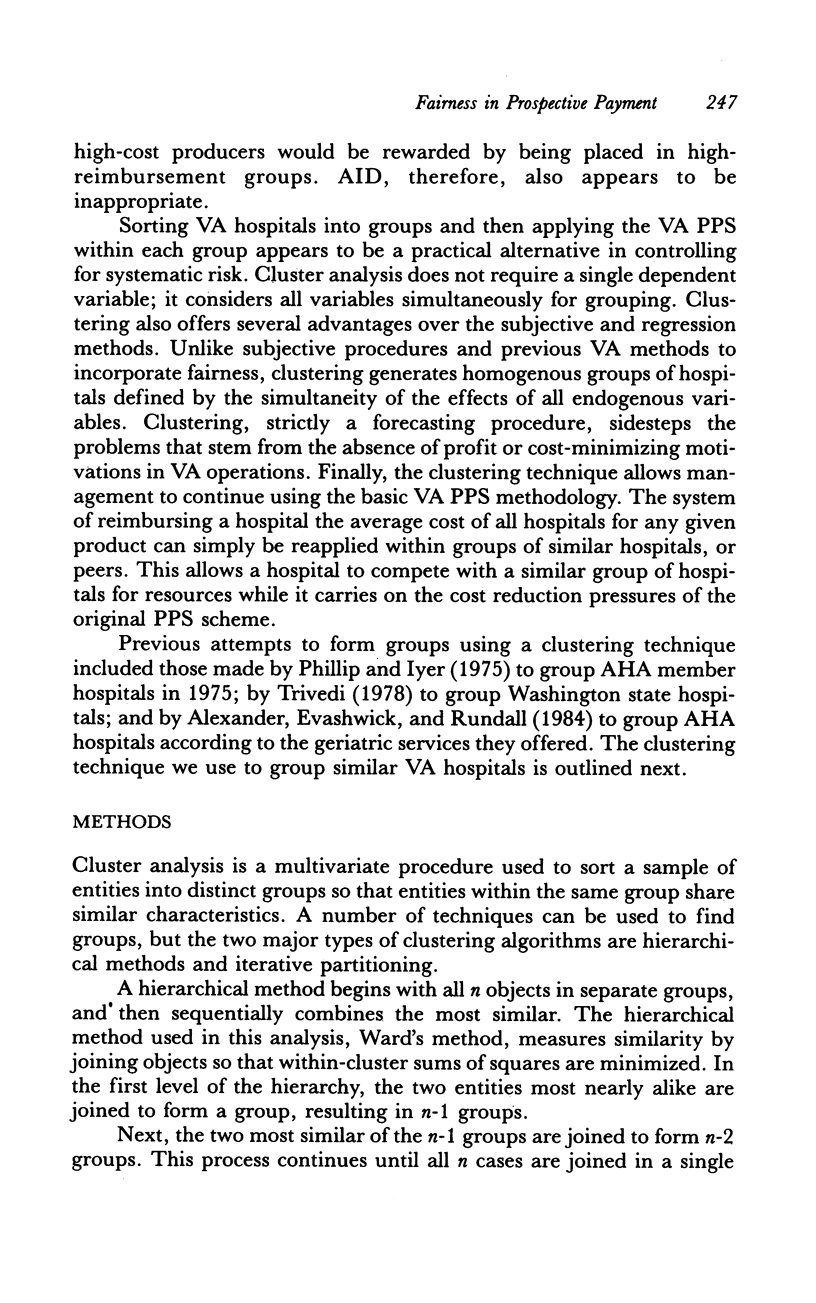

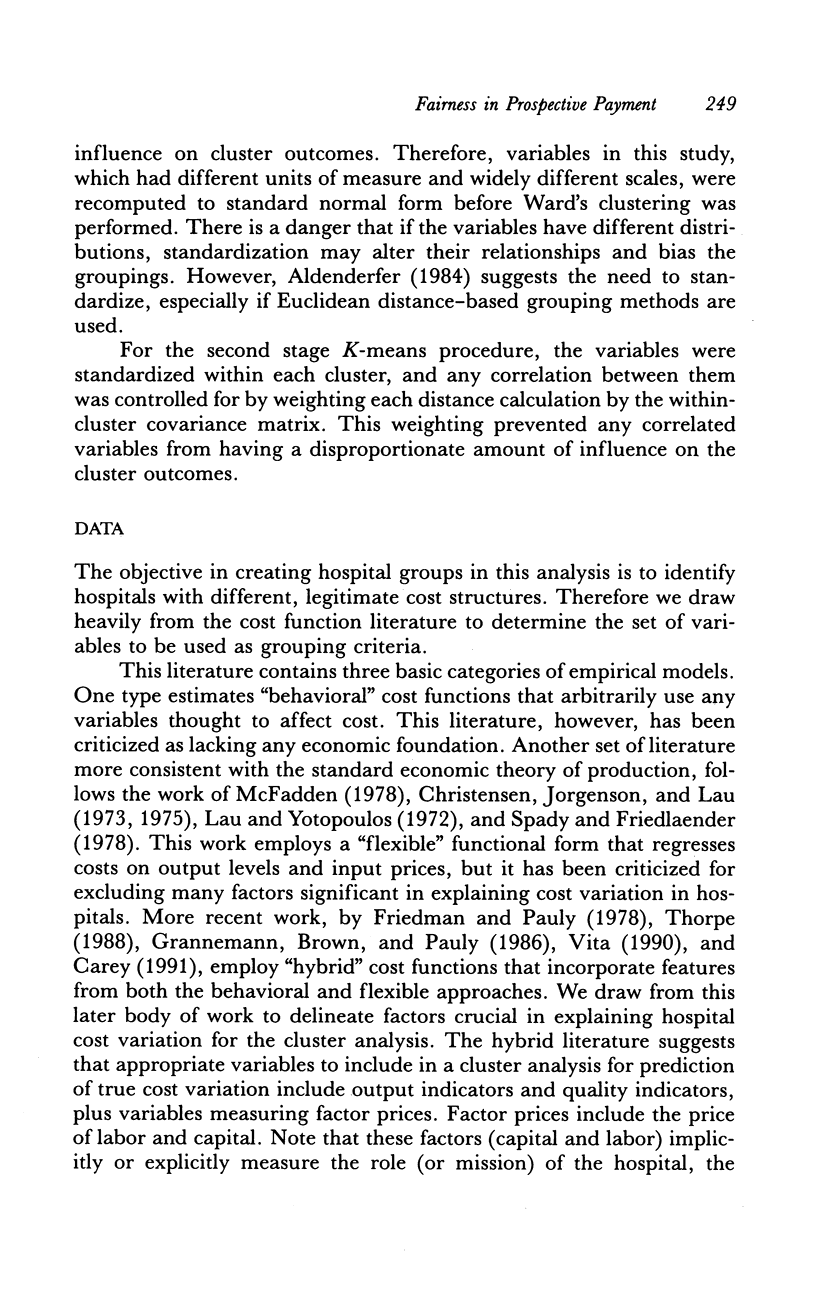



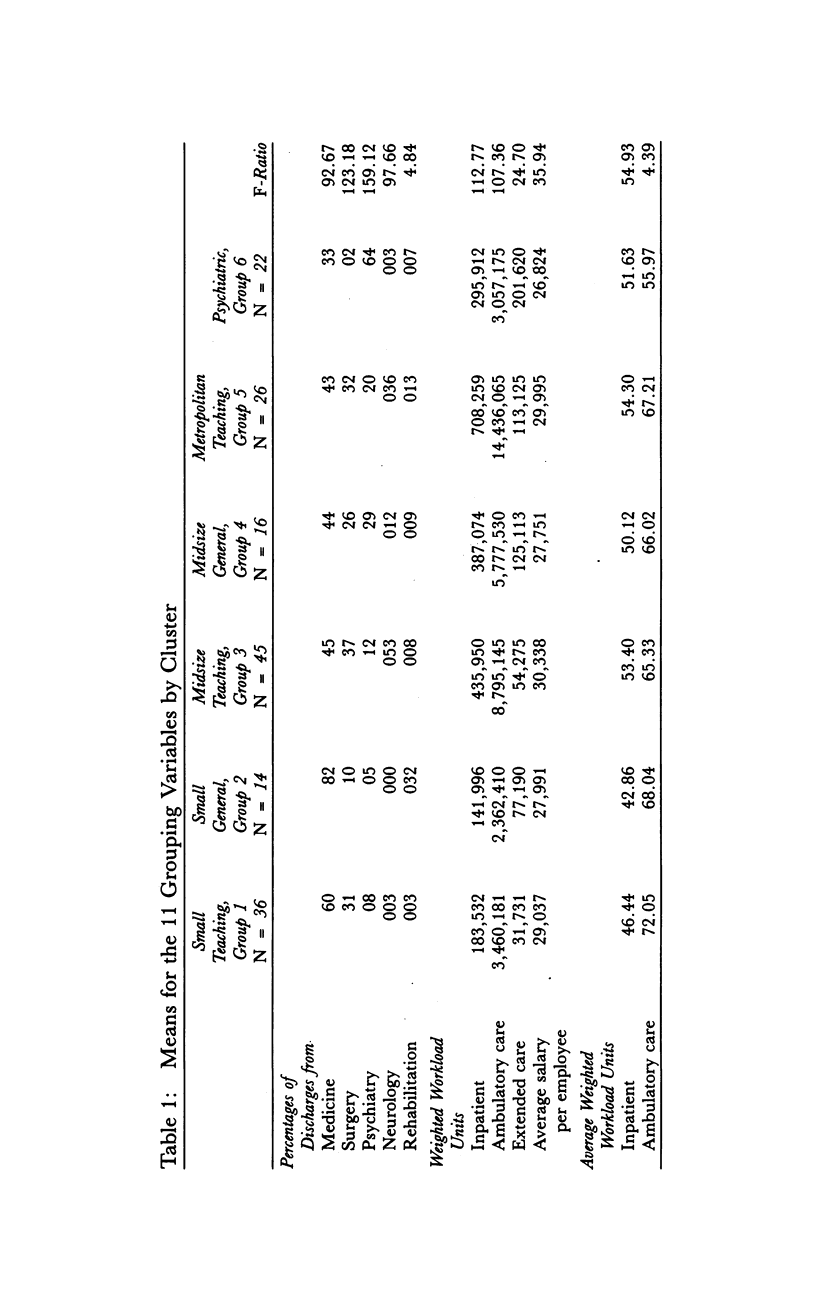
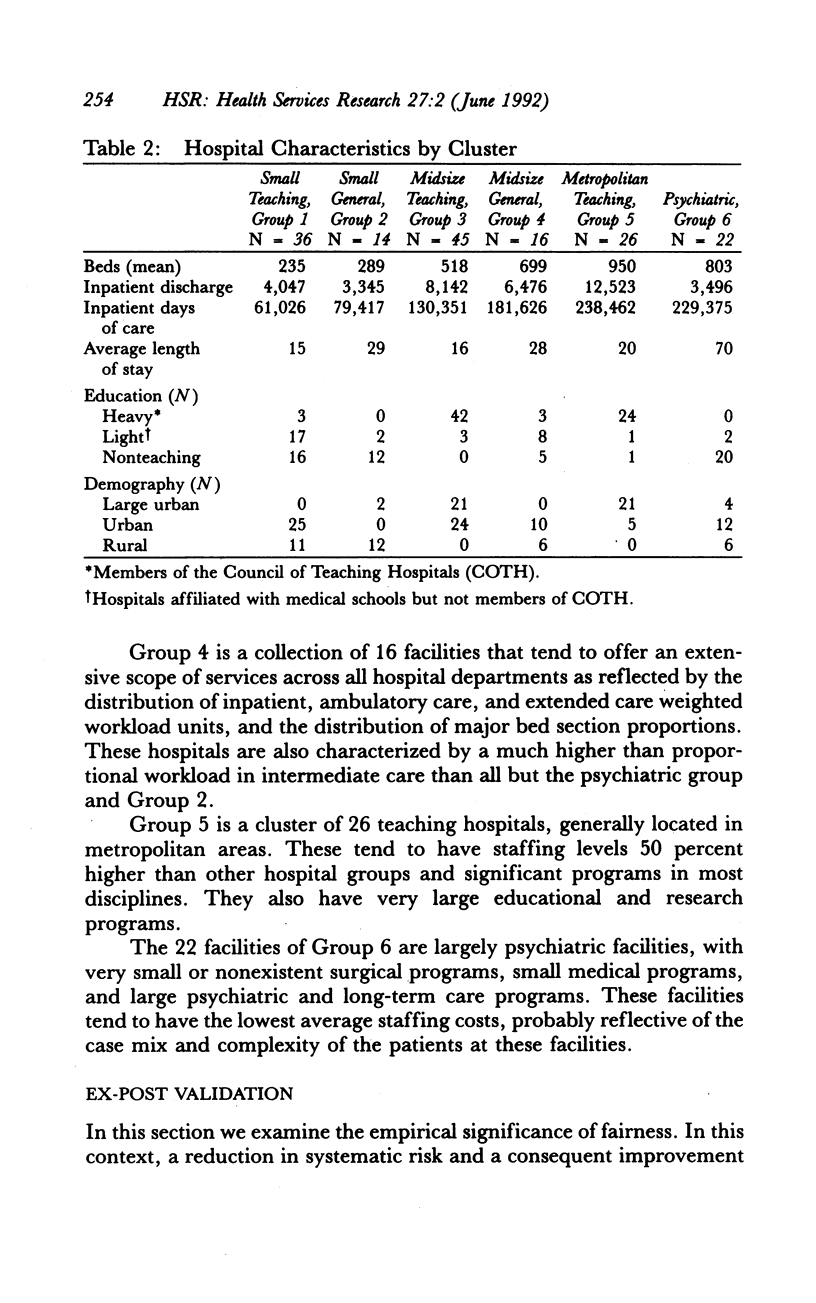

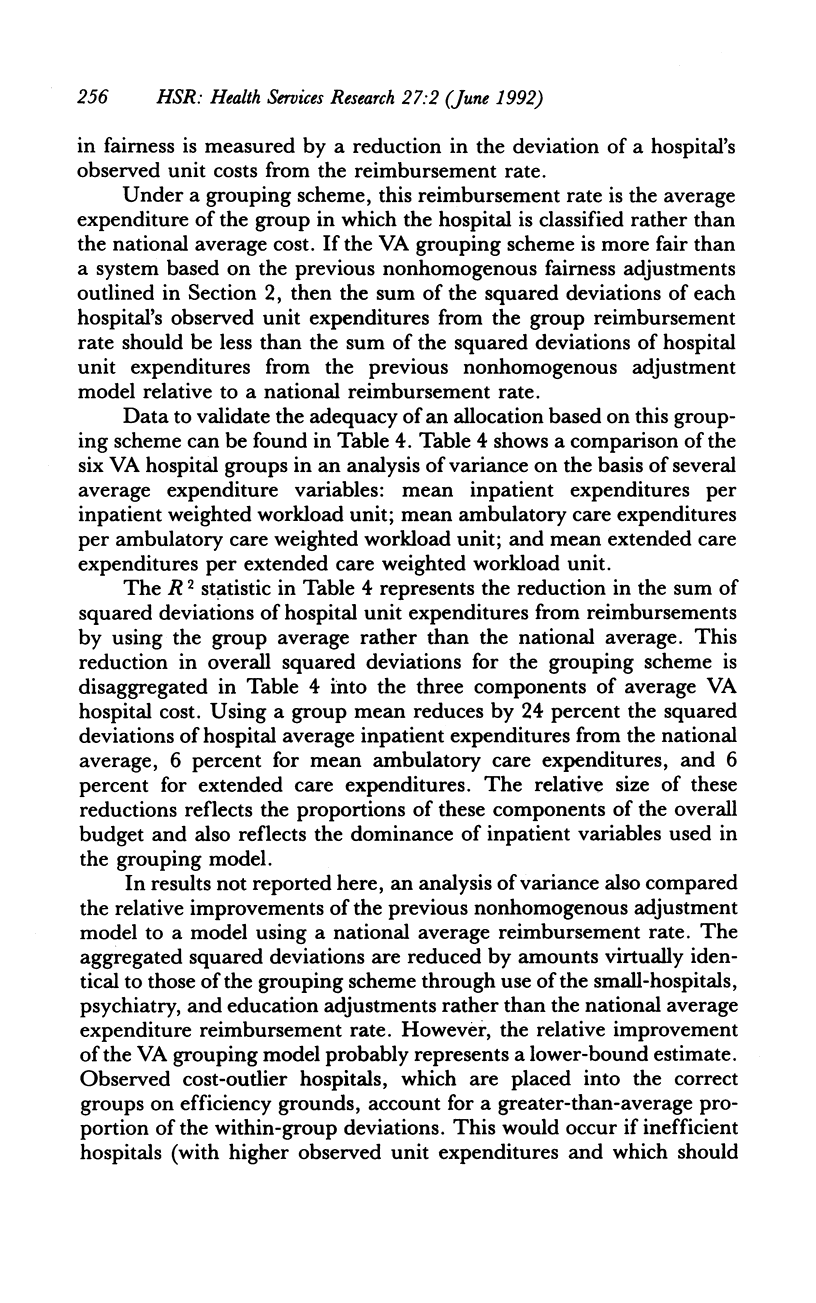

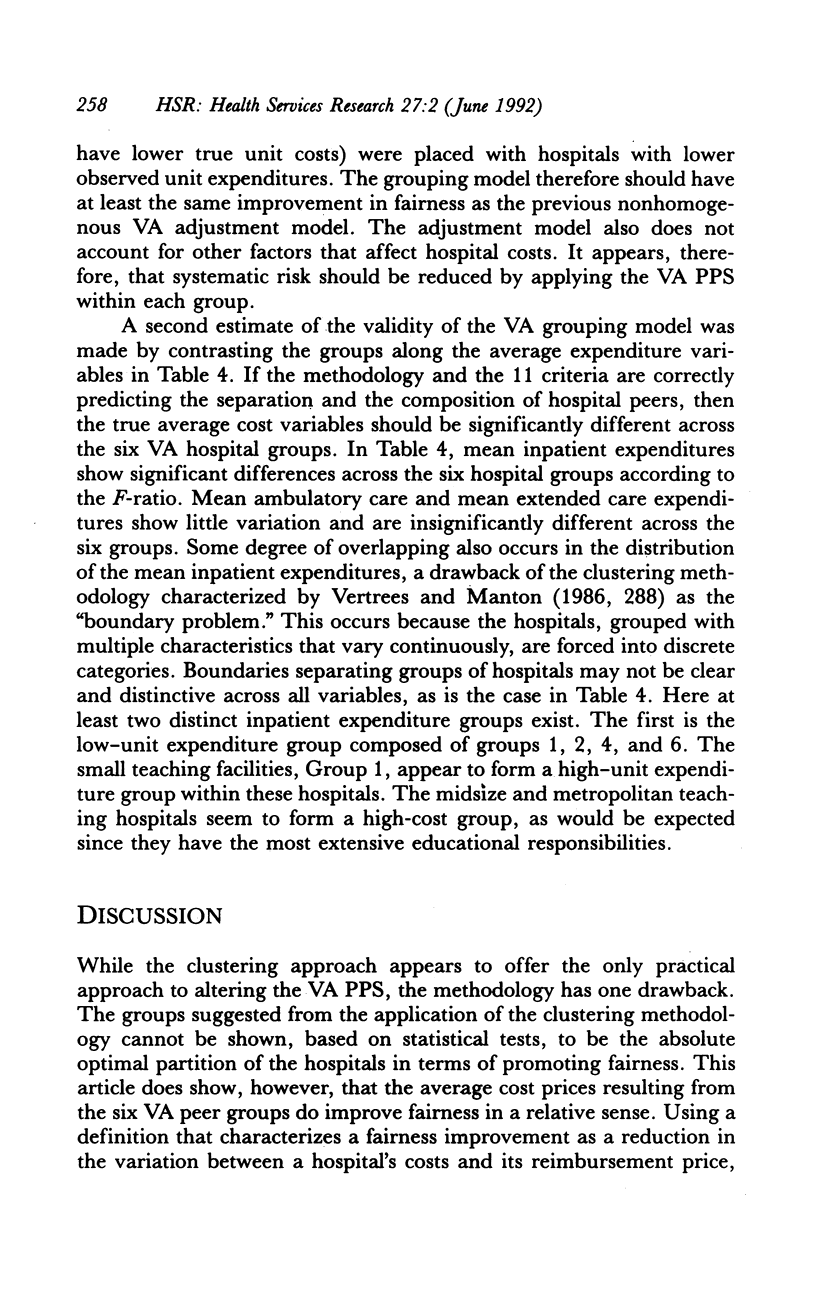
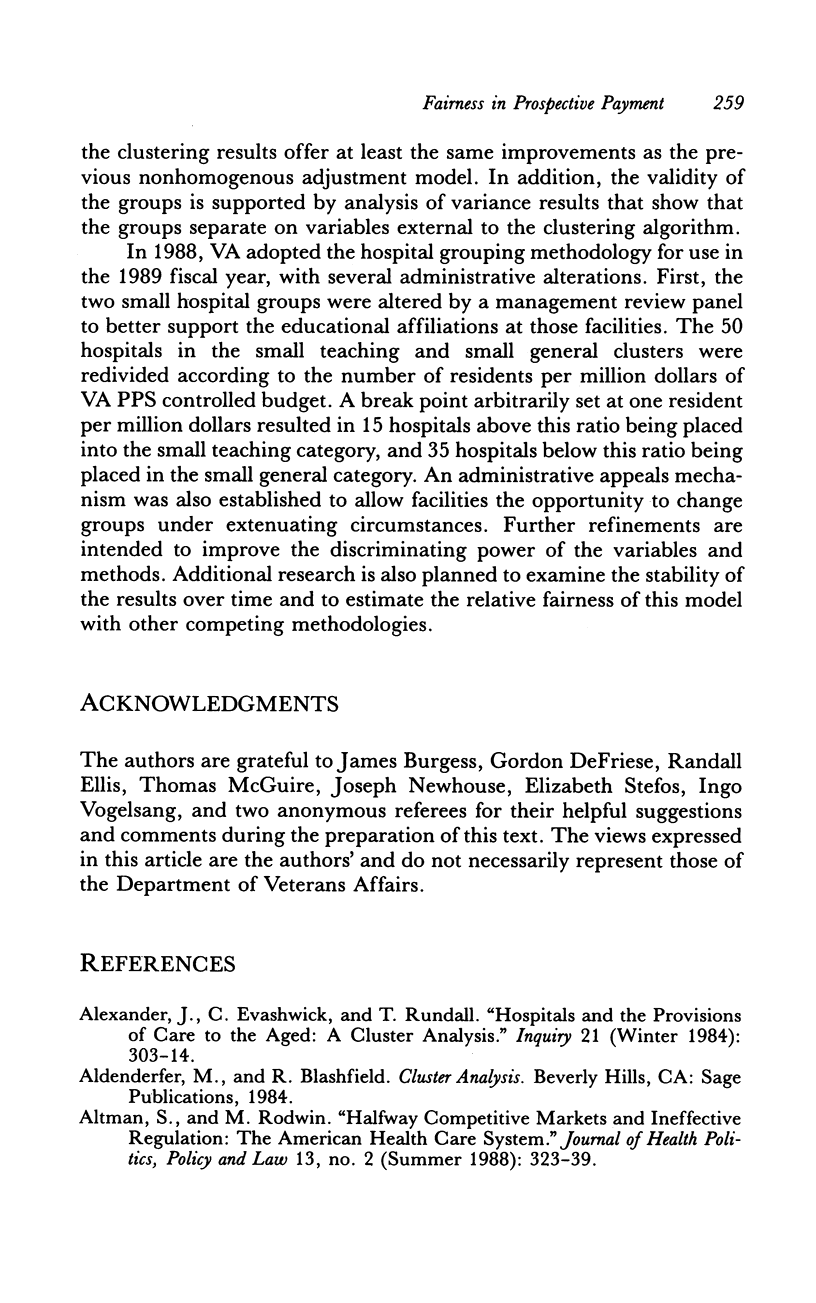


Selected References
These references are in PubMed. This may not be the complete list of references from this article.
- Alexander J. A., Evashwick C. J., Rundall T. Hospitals and the provision of care to the aged: a cluster analysis. Inquiry. 1984 Winter;21(4):303–314. [PubMed] [Google Scholar]
- Altman S. H., Rodwin M. A. Halfway competitive markets and ineffective regulation: the American health care system. J Health Polit Policy Law. 1988 Summer;13(2):323–339. doi: 10.1215/03616878-13-2-323. [DOI] [PubMed] [Google Scholar]
- Ellis R. P., McGuire T. G. Insurance principles and the design of prospective payment systems. J Health Econ. 1988 Sep;7(3):215–237. doi: 10.1016/0167-6296(88)90026-4. [DOI] [PubMed] [Google Scholar]
- Ellis R. P., McGuire T. G. Provider behavior under prospective reimbursement. Cost sharing and supply. J Health Econ. 1986 Jun;5(2):129–151. doi: 10.1016/0167-6296(86)90002-0. [DOI] [PubMed] [Google Scholar]
- Grannemann T. W., Brown R. S., Pauly M. V. Estimating hospital costs. A multiple-output analysis. J Health Econ. 1986 Jun;5(2):107–127. doi: 10.1016/0167-6296(86)90001-9. [DOI] [PubMed] [Google Scholar]
- Guterman S., Eggers P. W., Riley G., Greene T. F., Terrell S. A. The first 3 years of Medicare prospective payment: an overview. Health Care Financ Rev. 1988 Spring;9(3):67–77. [PMC free article] [PubMed] [Google Scholar]
- Holahan J., Palmer J. L. Medicare's fiscal problems: an imperative for reform. J Health Polit Policy Law. 1988 Spring;13(1):53–81. doi: 10.1215/03616878-13-1-53. [DOI] [PubMed] [Google Scholar]
- Hornbrook M. C., Monheit A. C. The contribution of case-mix severity to the hospital cost-output relation. Inquiry. 1985 Fall;22(3):259–271. [PubMed] [Google Scholar]
- Jencks S. F., Dobson A., Willis P., Feinstein P. H. Evaluating and improving the measurement of hospital case mix. Health Care Financ Rev. 1984;Suppl:1–11. [PMC free article] [PubMed] [Google Scholar]
- Phillip P. J., Iyer R. N. Classification of community hospitals. Health Serv Res. 1975 Winter;10(4):349–368. [PMC free article] [PubMed] [Google Scholar]
- Pope G. C. Using hospital-specific costs to improve the fairness of prospective reimbursement. J Health Econ. 1990 Nov;9(3):237–251. doi: 10.1016/0167-6296(90)90045-5. [DOI] [PubMed] [Google Scholar]
- Thorpe K. E. Why are urban hospital costs so high? The relative importance of patient source of admission, teaching, competition, and case mix. Health Serv Res. 1988 Feb;22(6):821–836. [PMC free article] [PubMed] [Google Scholar]
- Trivedi V. M. Classification of short-term general hospitals for control and equity. Inquiry. 1978 Sep;15(3):255–264. [PubMed] [Google Scholar]
- Vertrees J. C., Manton K. G. A multivariate approach for classifying hospitals and computing blended payment rates. Med Care. 1986 Apr;24(4):283–300. doi: 10.1097/00005650-198604000-00001. [DOI] [PubMed] [Google Scholar]
- Vita M. G. Exploring hospital production relationships with flexible functional forms. J Health Econ. 1990 Jun;9(1):1–21. doi: 10.1016/0167-6296(90)90038-5. [DOI] [PubMed] [Google Scholar]
- Zwanziger J., Melnick G. A. The effects of hospital competition and the Medicare PPS program on hospital cost behavior in California. J Health Econ. 1988 Dec;7(4):301–320. doi: 10.1016/0167-6296(88)90018-5. [DOI] [PubMed] [Google Scholar]


